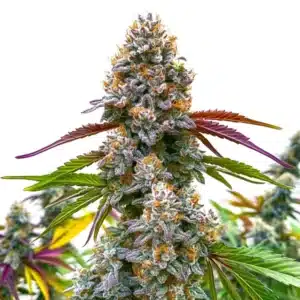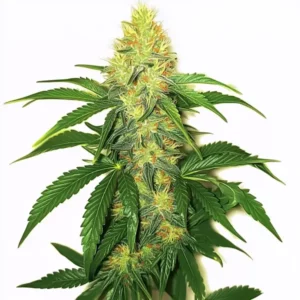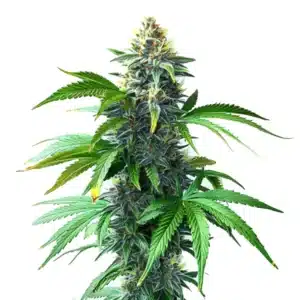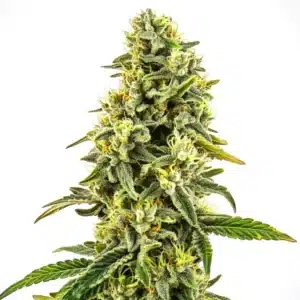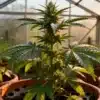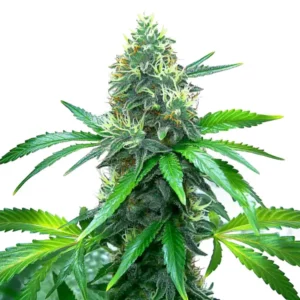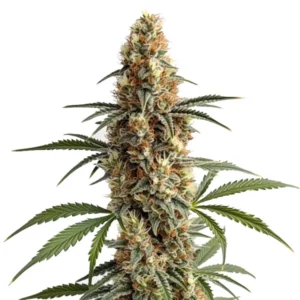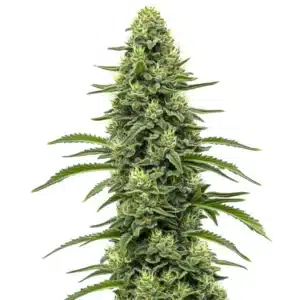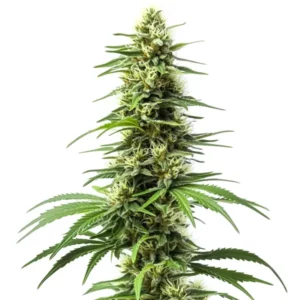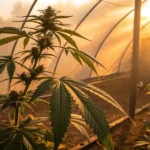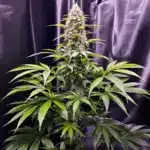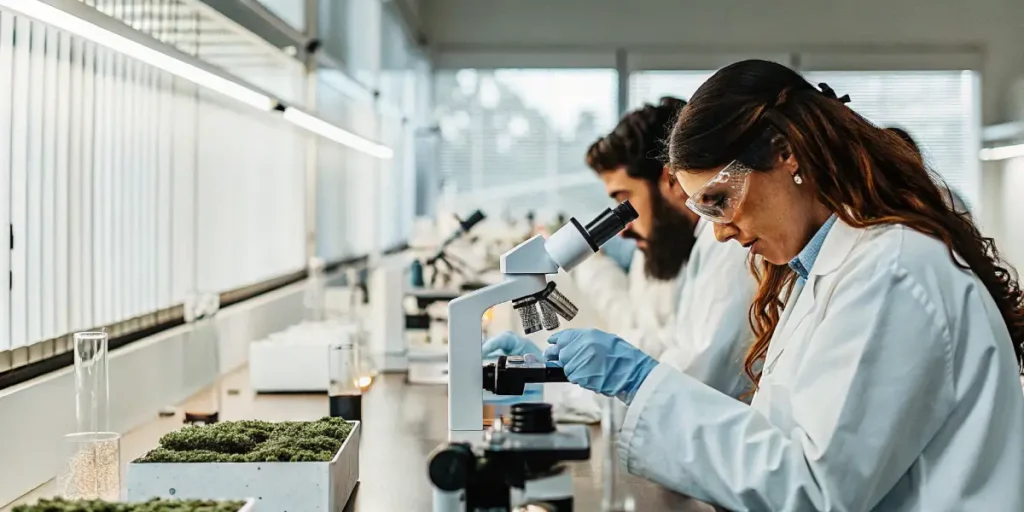
How Controlled Stress Increases Cannabinoid Levels
Growing cannabis is both an art and a science. One of the intriguing aspects is how controlled stress can effectively increase cannabinoid levels in your plants. This concept might sound counterintuitive at first. However, applying the right amount of stress at the right time can boost your plant’s natural defenses. This, in turn, enhances cannabinoid production.
When talking about controlled stress, it’s about creating a balance. Overdoing it can harm your plants, while just the right touch can lead to a stress-induced cannabinoid increase. This balance is crucial for both first-time growers and seasoned cultivators. Learning to manage this balance can set you on the path to achieving higher quality and more potent cannabis.
Recommended Strains
Critical Daddy Purple
|
|
THC | 19% (Medium) |
|
|
Type | Feminized |
|
|
Yield | High |
|
|
Phenotype | 50% Indica / 50% Sativa |
AK 47
|
|
THC | 16% - 19% (Medium) |
|
|
Type | Feminized |
|
|
Yield | Medium |
|
|
Phenotype | 35% Indica / 65% Sativa |
Controlled stress cannabinoid production is a practice that requires a keen eye and a good knowing of your plants’ needs. Every strain reacts differently. For instance, Blimburn Seeds offers a variety of strains like AK-47, Critical Daddy Purple, and OG Kush, each with unique responses to stress management techniques.
Techniques for Controlled Stress in Cannabis Cultivation
There are several methods to introduce controlled stress to cannabis plants. Each technique aims to enhance cannabinoids through stress management. By knowing these methods, you can apply them effectively to maximize your yield.
One common technique is Low-Stress Training (LST). This involves gently bending and tying down branches to allow more light to penetrate the lower parts of the plant. This method encourages the plant to grow more buds, thereby increasing the overall cannabinoid levels.
Another effective technique is known as topping, where the main shoot is cut to encourage lateral growth. This method not only increases the number of buds but also promotes a more uniform canopy, allowing equal light distribution. Topping, when done correctly, is a powerful tool for enhancing cannabinoids through stress management.
Additionally, techniques like root pruning can be employed to create a stress-induced cannabinoid increase. By trimming the roots, the plant reallocates its energy, often resulting in a more compact and fruitful plant. This method, although more advanced, can significantly impact stress and cannabinoid synthesis in your crops.
Low-Stress Training (LST)
Low-Stress Training is like a gentle nudge to your plants. By tying down branches, you encourage growth in areas that would otherwise be shaded. This method can lead to a more uniform canopy, maximizing light exposure and promoting the synthesis of cannabinoids throughout the plant.
For first-time growers, LST offers a straightforward way to introduce stress without overwhelming the plant. Using soft ties and careful handling, you can achieve results that are both impressive and rewarding. LST is particularly effective with strains like Critical Daddy Purple, which responds well to increased light exposure.
LST is not only beneficial for increasing cannabinoid levels but also for optimizing the overall growth pattern of the plant. By guiding the branches, you can influence the plant’s shape, making it more manageable and easier to cultivate. This controlled stress cannabinoid production technique is a staple for growers aiming for precision and quality.
Moreover, LST can be combined with other pruning techniques to further enhance the plant’s potential. By knowing how controlled stress increases cannabinoid levels, growers can strategically apply these methods to achieve a balanced and productive harvest.
Defoliation
Defoliation is another technique used to increase cannabinoid levels through controlled stress. By selectively removing leaves, you improve airflow and light penetration. This can lead to a healthier plant with more robust cannabinoid production.
The key to successful defoliation is timing and moderation. Overdoing it can stress the plant beyond its limits, reducing yield instead of enhancing it. However, done correctly, it can significantly impact stress and cannabinoid synthesis.
Defoliation helps in focusing the plant’s energy on the most productive parts. By removing unnecessary foliage, the plant can direct its resources towards developing bigger and denser buds, resulting in a more potent harvest. This method exemplifies the impact of stress on cannabinoid levels when executed with precision.
Another advantage of defoliation is its role in pest management. By improving airflow and reducing humidity within the canopy, you reduce the chances of mold and pest infestations, indirectly supporting stress-induced cannabinoid increase by maintaining plant health.
Super Cropping
Super cropping is a more advanced technique that involves pinching and slightly damaging the inner fibers of branches. This controlled stress can trigger a healing response, resulting in thicker, more resilient branches that support heavier buds.
For those familiar with their plants, super cropping can lead to a significant stress-induced cannabinoid increase. It’s essential to know your strain’s limits, as some are more resilient than others. AK-47 is known for its robust nature, making it an ideal candidate for this method.
Super cropping not only strengthens the plant’s structure but also enhances nutrient uptake. As the plant heals, it becomes more efficient in absorbing nutrients, which can lead to a more vigorous growth phase. This improved efficiency contributes to higher cannabinoid levels.
This technique also encourages lateral growth, leading to a bushier plant with more potential bud sites. By knowing the interplay between stress and cannabinoid synthesis, growers can strategically apply super cropping to enhance both yield and potency.
Promos & Deals
Benefits of Controlled Stress in Cannabis Cultivation
The benefits of controlled stress extend beyond increased cannabinoid production. When done correctly, these techniques contribute to the overall health and vitality of your plants. This holistic approach can lead to a more rewarding cultivation experience.
Controlled stress encourages resilience. Plants that endure and adapt to stress often become stronger and more productive. This resilience translates to higher yields and better quality, providing a tangible return on your investment of time and effort.
Additionally, the ability to tailor stress techniques to specific strains allows growers to unlock each plant’s full potential. This customization is key in achieving the desired balance between growth and potency, ultimately enhancing cannabinoids through stress management.
The impact of stress on cannabinoid levels is profound, with many growers reporting significant improvements in both quantity and quality. By embracing controlled stress, cultivators can push the boundaries of what’s possible, leading to innovative and effective growing practices.

Improved Yield and Potency
One of the most direct benefits is improved yield. By managing stress effectively, plants focus their energy on producing more flowers with higher cannabinoid content. This translates to a more potent final product, satisfying both personal and commercial growers.
For instance, Critical Daddy Purple, when subjected to controlled stress, can exhibit a noticeable enhancement in both yield and potency. This makes it a favorite among growers looking for a reliable and rewarding strain.
Moreover, the consistent application of stress techniques can result in a more uniform product, with each harvest exhibiting similar levels of potency and quality. This consistency is highly valued in the market, where predictability and reliability are key.
Knowing how controlled stress increases cannabinoid levels is essential for maximizing these benefits. By observing and adjusting your approach, you can continuously refine your techniques to ensure optimal results with every grow cycle.
Strengthened Plant Structure
Controlled stress not only boosts cannabinoid levels but also strengthens the plant’s overall structure. Techniques like super cropping encourage the development of sturdier branches capable of supporting larger buds.
This structural improvement reduces the risk of breakage and other issues that can arise during the flowering stage. A well-structured plant is more resilient to environmental stressors, further ensuring a successful grow cycle.
This resilience translates to a reduced need for external support structures, such as stakes or nets, simplifying the cultivation process. A stronger plant can withstand adverse weather conditions, pests, and diseases, ensuring a healthy and bountiful harvest.
The interplay between stress and cannabinoid synthesis is evident in the plant’s response to these methods. By strategically applying stress, growers can cultivate plants that are not only more potent but also robust and resilient.
Enhanced Flavor and Aroma
Another exciting benefit is the enhancement of flavor and aroma. Stress and cannabinoid synthesis are closely linked to terpene production, which influences the taste and smell of the final product.
By applying controlled stress, growers can enhance these aromatic compounds, resulting in a richer sensory experience. This is particularly noticeable in strains like OG Kush, known for its pungent aroma and complex flavor profile.
As growers refine their technique, they can experiment with different stress applications to achieve specific flavor profiles. This customization allows for a diverse range of products, catering to various consumer preferences and expanding market opportunities.
Furthermore, the enhanced aroma and flavor resulting from stress-induced cannabinoid increase can set your product apart in a competitive market. By knowing how controlled stress impacts these attributes, you can tailor your approach to meet the demands of discerning consumers.
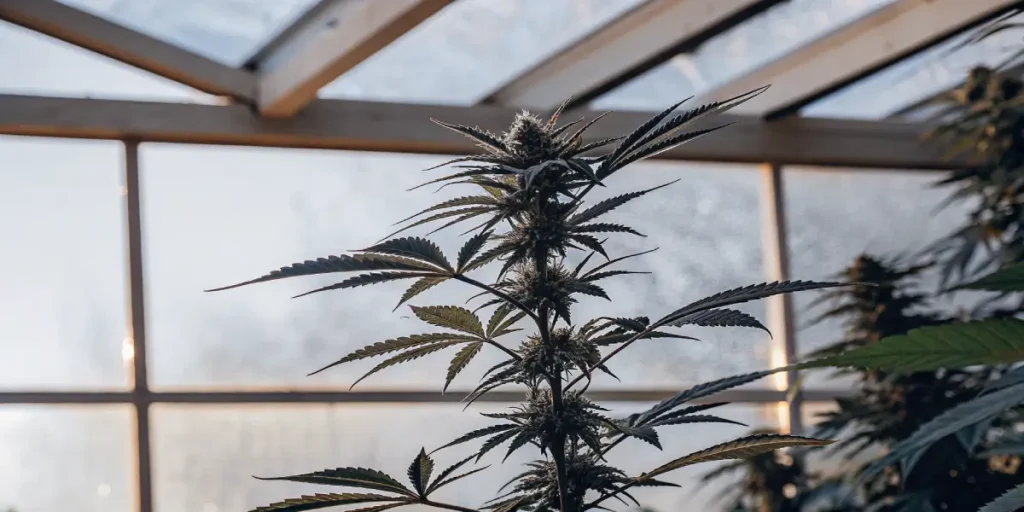
Frequently Asked Questions
How does controlled stress increase cannabinoid levels in cannabis plants?
Controlled stress increases cannabinoid levels by triggering the plant’s natural defense mechanisms. When a cannabis plant experiences stress, it produces more cannabinoids as a protective response. This increase is part of the plant’s strategy to survive and thrive under challenging conditions.
Applying controlled stress through techniques like LST, defoliation, or super cropping can lead to higher cannabinoid production. Each method involves a different form of stress, but the goal remains the same: to enhance the plant’s natural cannabinoid synthesis, resulting in a more potent final product.
Knowing the relationship between stress and cannabinoid synthesis is crucial for growers looking to optimize their harvest. By carefully selecting and applying stress techniques, cultivators can influence the plant’s growth trajectory, leading to improved quality and yields.
Moreover, the adaptability of these techniques allows growers to experiment and find the optimal balance for each strain. This experimentation is key to unlocking the full potential of your cannabis plants through controlled stress cannabinoid production.
What is the best way to apply controlled stress for beginners?
For beginners, Low-Stress Training (LST) is a great starting point. LST is easy to learn and involves minimal risk of damaging the plant. By gently bending and tying down branches, you can improve light penetration and promote even growth.
This method allows new growers to see the impact of controlled stress cannabinoid production without overwhelming their plants. Watching how your plants respond can also provide valuable insights, helping you build confidence as you experiment with other techniques.
Starting with LST helps beginners develop a keen sense of observation, which is crucial for successful cannabis cultivation. As they gain experience, they can gradually introduce more complex techniques, further enhancing cannabinoids through stress management.
Additionally, engaging with online communities and resources can provide support and guidance as you explore the benefits of controlled stress. Sharing experiences and learning from others can accelerate your journey towards becoming a skilled cultivator.
Can too much stress harm my cannabis plants?
Yes, too much stress can harm cannabis plants. While controlled stress is beneficial, excessive stress can overwhelm the plant, leading to stunted growth or even death. It’s crucial to monitor your plants closely and avoid pushing them beyond their limits.
Knowing each strain’s tolerance is key to applying stress effectively. Start with gentle techniques and gradually increase intensity as you become more familiar with your plants’ responses. This careful approach minimizes the risk of negative outcomes.
Monitoring your plants for signs of stress, such as wilting or discoloration, is vital in avoiding detrimental effects. By recognizing these early indicators, you can adjust your techniques to ensure a healthy and productive crop.
Balancing stress and growth is a dynamic process that requires patience and precision. By focusing on stress-induced cannabinoid increase while maintaining plant health, you can achieve optimal results without compromising your crop’s well-being.
Which cannabis strains respond best to controlled stress techniques?
Different strains respond uniquely to stress. Strains like AK-47, Critical Daddy Purple, and OG Kush from Blimburn Seeds are known for their resilience and ability to thrive under stress. These strains are well-suited for techniques like LST, super cropping, and defoliation.
Experimenting with various strains can help you identify which ones perform best under your specific growing conditions. By observing their reactions, you can refine your stress management approach to maximize cannabinoid levels effectively.
Choosing the right strain is crucial for successful stress management. Consider factors such as growth habit, resilience, and desired cannabinoid profile when selecting strains to cultivate under controlled stress.
Engaging with breeders and seed banks can provide valuable insights into the optimal stress techniques for specific strains. By leveraging their expertise, you can make informed decisions to enhance your cultivation efforts.
How can I tell if my cannabis plants are benefiting from controlled stress?
Signs that cannabis plants are benefiting from controlled stress include increased bud sites, thicker stems, and enhanced aroma and flavor. Healthy plants will show vibrant growth and develop a robust structure capable of supporting larger yields.
Monitoring changes in your plants’ appearance and overall vitality can provide clues about the effectiveness of your stress management techniques. Adjusting your approach based on these observations ensures the continued health and productivity of your cannabis crop.
Regular documentation of your plants’ progress, including photos and notes, can aid in tracking the impact of stress on cannabinoid levels. This record-keeping allows for more precise adjustments and improved outcomes over time.
Incorporating technology, such as sensors and monitoring systems, can further enhance your ability to observe and respond to changes in your plants. This data-driven approach can optimize stress-induced cannabinoid increase and overall cultivation success.


